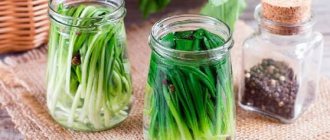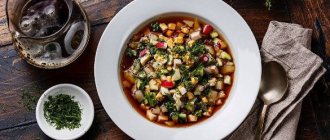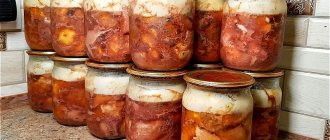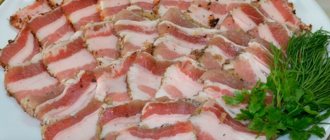Pesto is a green sauce that was first prepared in Genoa in the Liguria region. The sauce got its name from the Italian word for “to grind.” In addition, it is very consonant with the word “pestle”. Italians prepare it specifically, grinding all the ingredients in a mortar. It is also interesting because it does not require heat treatment during cooking. The ingredients are simply crushed in a mortar and mixed together.
Pesto is one of the most popular Italian sauces, which is made from cheese, olive oil and basil. Often it is sold ready-made in jars. Pesto sauce has a specific color - it is green. But there are also its varieties. For example, if you add tomatoes to the pesto ingredients, it will turn red.
Classic pesto is prepared by grinding the ingredients in a mortar. To do this, take pine nuts, garlic, salt, grated Parmesan cheese and fresh basil leaves. Everything is crushed in a marble mortar with a wooden pestle and olive oil is added. Typically, pesto sauce is very thick in consistency.
Thanks to this Italian sauce, even an ordinary nondescript dish acquires an unusual and original taste.
Any type of pesto goes well with pasta and ravioli. In addition, you can serve rice and various steamed vegetable mixtures with it.
It is not recommended to overheat pesto. It can even be used simply as a spice. You can add pesto to other sauces, season soups and dressings. You can also simply mix it with boiled pasta. If you prepare a real Ligurian dish, then take fresh wide pasta or tagliatelle noodles.
Pasta sauce
To prepare the sauce, you need to take a red onion and chop it into small pieces. Then peel the clove of garlic and pass it through the garlic press. Next, you need to combine these two ingredients together and fry in a frying pan. Then you need to add canned chopped tomatoes (420 g) to them and let them simmer a little in a frying pan. Now you need to add pesto (2 tbsp) and sour cream (1 tbsp). Season with your favorite spices on top. The amount of sauce is calculated for 450 g of pasta.
Classic recipe
At home, you can implement the Genoese recipe with basil. This herb is the most important ingredient. Professional chefs try to add emerald green color to present food beautifully. To prepare pasta with Genovese sauce, be sure to take high-quality pasta and prepare a delicious sauce yourself.
Ingredients:
- 50 g – basil leaves;
- 1 pc – garlic clove;
- 70 gr – parmesan;
- 20 g – pecorino;
- 5 g – salt;
- 15 g – pine nuts;
- 7 g – olive oil;
Be sure to take green basil leaves. Fresh, they will give the most vibrant color and wonderful aroma. It is best to grind all the ingredients in a mortar, but often there is not enough time for this.
As a result, you can simply take a blender and grind food with it. Feel free to add all the ingredients at once. The most important thing is to use the blender in stages, with short pauses. During stops, the sauce is completely saturated with oxygen and gains its beautiful color. The consistency should be homogeneous.
The classic version of alla ligure must be served with certain pasta. It can be spaghetti, the sauce is mixed with it immediately or served separately.
Pesto Rosso
This type of pesto sauce can be safely prepared when the usual version has already begun to get boring. It goes well with a wide variety of dishes, and the cooking process is practically no different from the classics.
Ingredients:
- 50 g – basil;
- 150 g – dried tomatoes;
- 50 gr – parmesan;
- 25 g – pine nuts;
- 200 ml – olive oil;
- 2-3 pcs – garlic cloves;
You can add hot pepper and salt to the finished sauce to taste. It is better to avoid other seasonings; the ingredients will provide all the necessary taste and aroma.
Before cooking, you need to fry the nuts in a hot frying pan. This way there will be much more smell and taste from cedar. Then all the ingredients are simply mixed with a blender until smooth. All that remains is to serve the sauce to slightly cooled dishes.
What are the benefits of pesto sauce?
According to the recipe, the sauce is prepared only from fresh ingredients that have not undergone heat treatment. This allows us to say that it contains a fairly large amount of vitamins and microelements , including:
- calcium;
- potassium;
- magnesium;
- phosphorus;
- zinc;
- copper and many others.
sauce brings great benefits to the human body! It stimulates the immune system, reduces bad cholesterol, removes toxins and generally improves the functioning of the digestive system.
Although pesto is a fairly high-calorie sauce, this does not prevent it from being a welcome guest on the table of a housewife who watches her figure. After all, only healthy fats make up the calories! The consumption rate is approximately one to two tablespoons per day .
If you buy a ready-made product in a store, read the ingredients as carefully as possible. Avoid unnecessary preservatives and do not forget about individual food intolerances.
Traditional ingredients
The pesto alla genovese known to us has absorbed the best gifts of the Italian region, so in Genoa they are very strict in the selection of ingredients.
For the sauce, only young and fresh basil leaves without stems are collected. Since ancient times, Liguria has specialized in the cultivation of this spicy plant, and it has always been available to local residents.
Pine nuts must first be fried in a dry frying pan or dried in the oven. This is done so that the nuts become slightly oily and are crushed better.
The Genoese recipe, of course, contains Parmigiano-Reggiano cheese from Emilia-Romagna, to which sheep's milk cheese is sometimes added - Pecorino Sardo or Pecorino Romano.
Young garlic is chosen because it is less bitter.
Coarse sea salt helps to better grind the remaining ingredients, and when preparing the sauce by hand, this is what you use.
To give the sauce the desired consistency, only unrefined extra virgin olive oil is used.
Tradition and modernity
Today pesto is an essential attribute of the Italian diet , both everyday and festive.
Whether this is due to basil, which has a reputation as a “royal” plant, or some other reasons, putting the sauce on the newlyweds’ table is considered by Italians to be a good sign for the future family .
Prosperity and prosperity await the young.
The additive is so versatile that it is used not only with the famous pasta and Italian flatbreads. In Liguria, they season the sauce with a special pasta dish called trenette.
But pesto can easily make spaghetti, farfalle or lasagna piquant and multifaceted.
It is added to appetizers, such as Caprese (a dish based on tomatoes and mozzarella), and used in making pizza and bruschetta.
They flavor salads (literally one teaspoon is enough), main courses of baked meat or vegetables.
Want to know how to make mascarpone cheese at home? We will tell you about the traditions in preparing Italian dishes on our website!
And from the following material you will learn how to prepare the classic dessert tiramisu - the famous Italian pastry.
Read all about the famous sparkling wine - Martini Asti, its price and varieties in this article: https://expertitaly.ru/italyanskaya-kuhnya/napitki/martini-asti.html.
Pesto alla trapanese
Pesto alla trapanese originated on the island of Sicily in the province of Trapani. Apparently, Genoese sailors introduced the sauce to the Sicilians. The inhabitants of Trapani slightly modified the recipe, adding ingredients typical of their territory: almonds and fresh tomatoes.
Ingredients:
- tomatoes - 250 g
- fresh basil - 50 g
- almonds - 50 g
- grated pecorino or parmesan cheese - 30 g
- Extra virgin olive oil – 50 ml
- garlic - 1 clove
- coarse sea salt - to taste
- freshly ground black pepper - to taste
Cooking method:
- To make pesto alla trapanese, it is better to use peeled almonds. To remove the skins, place the nuts in boiling water and blanch for about 1-2 minutes. Then drain the water, place the almonds on a flat surface and dry with a towel. Once the nuts have cooled, the skins will be easy to remove by hand.
- Now prepare the tomatoes. Place the tomatoes in boiling water for 2-3 minutes. Remove with a slotted spoon and cool. Then remove the skin from each tomato.
- Grind the almonds in a blender bowl.
- Add tomatoes, stemmed basil leaves and garlic. Grind until smooth.
- Add the grated pecorino, stir and transfer the mixture to a bowl. Season with salt and pepper and adjust the thickness of the sauce with olive oil. Ready!
Pesto alla trapanese has an aromatic and delicate taste. Good for bruschetta and goes well with all types of pasta.
What do you eat pesto with?
It is very convenient to prepare the sauce and store it in the refrigerator. He will come to the rescue if guests suddenly arrive unexpectedly.
Simple vegetables served with pesto make a great cold appetizer. And by cutting fresh tomatoes, tender mozzarella cheese and adding a little sauce, you will get a classic dish of Italian cuisine - caprese salad . Making a hot appetizer couldn’t be easier! Just warm up some pesto-coated bread in the oven and your bruschetta is ready.
Thanks to the bitter taste of greens and slight sourness, pesto sauce is an excellent addition for:
- pasta, lasagna and other pasta dishes;
- mashed potatoes, cauliflower or pumpkin;
- meat and poultry dishes;
- seafood (mussels, octopus, squid and shrimp);
- legume dishes such as peas, beans or chickpeas;
- rice dishes , especially for risotto;
- vegetable stew.
I recommend marinating the meat in pesto sauce before cooking. Greens will give the meat a unique taste! This could become your signature culinary secret.
Composition, history and taste characteristics
The pesto sauce contains basil and butter, pine nuts, cheese and garlic - these ingredients are enough to create a unique dressing! The sauce appeared in Italy, namely in Liguria - the first mentions can be found in books of the nineteenth century. Rich people appreciated exquisite spices; the use of dressing by the poor was due to the need to mask the taste of other components.
There is an interesting legend that tells about a monk who collected delicious herbs in the mountains. He ground it with other ingredients donated by parishioners and got an impressive result!
You already know what pesto sauce is made from - but what does it taste like? You won't find any spicy or spicy notes - the dressing has a neutral, soft taste, freshness and herbaceous aroma.
The calorie content is quite high - 269 Kcal per 100 grams of product.
In addition, it contains the following useful components:
- Vitamin A;
- Vitamin C;
- Iron;
- Calcium;
- Orientin and Vikenin;
- Vitamin D;
- Monounsaturated fats.
We have already mentioned that the dressing is versatile - let's discuss what pesto sauce is suitable for?
We also recommend: Lyutenitsa
What ingredients are in pesto sauce?
I think everyone has heard about this sauce. Classic pesto is called “Genovese” , it is distinguished by its bright and rich green color. Its main ingredients are:
- olive oil (this is the base of the sauce, so we choose only the best product);
- aromatic herbs such as basil, parsley, cilantro, rosemary, oregano, arugula or spinach.
It should be mentioned that real olive oil must be obtained through mechanical (cold) pressing . Produced in this way, the oil retains the natural aroma, taste, and most importantly, all the benefits of olives.
The whole secret of greens is that they must be fresh. It needs to be finely crushed using a mortar or blender.
Another version of pesto sauce , which is popular all over the world, is called "rosso" . The base, of course, is Provençal olive oil, and sun-dried tomatoes .
The classic ingredients of pesto sauce include:
- pine nuts, almonds or walnuts ;
- hard cheese of your choice (it will make the sauce more homogeneous);
- citrus juice (you can experiment and add grapefruit, lemon or orange juice);
- garlic, salt, pepper or any other spices of your choice;
- avocado, ginger, mango will be an original touch and make the sauce unique.
Recipe 2: Pesto Paste
A distinctive feature of Italian pasta is that it is not cooked completely, and then absorbs some more water. Therefore it never sticks together.
Ingredients: pasta (1 pack, 450 grams), Pesto sauce, a little olive oil and Parmesan cheese.
Cooking method
Boil the pasta. Drain the water, but leave a cup of broth. Mix the finished pasta with a spoon of olive oil or butter. There should be some liquid at the bottom of the pan. Olive oil does not dry out the pasta; it becomes juicier. Add sauce to pasta and sprinkle Parmesan on top. This type of cheese only melts at high temperatures, so it won't melt into hot pasta.











